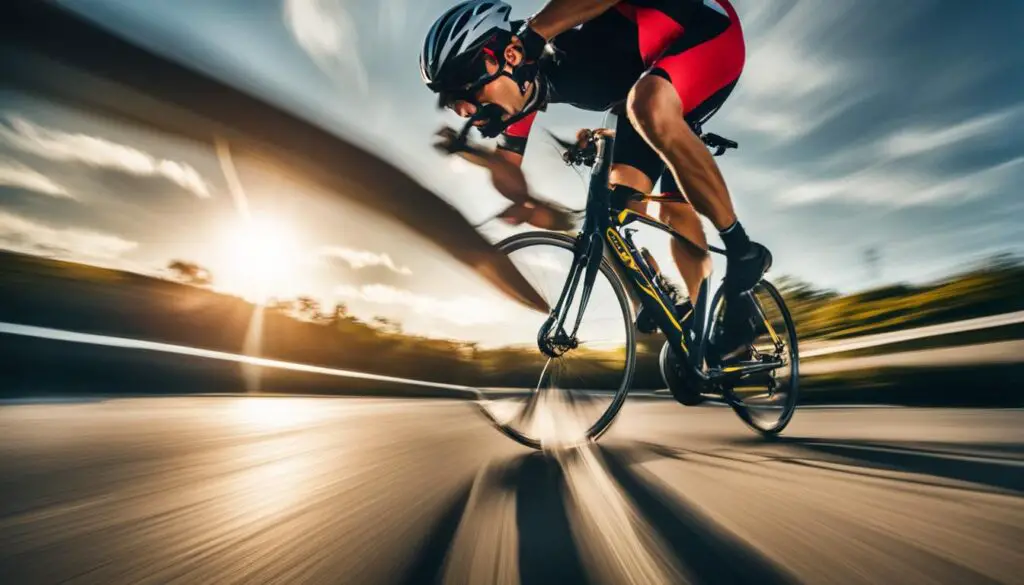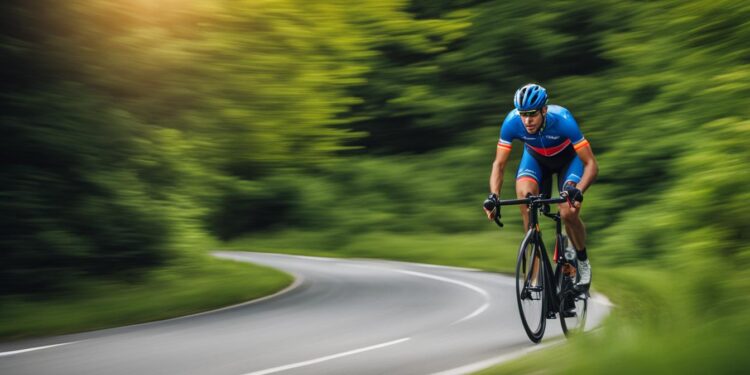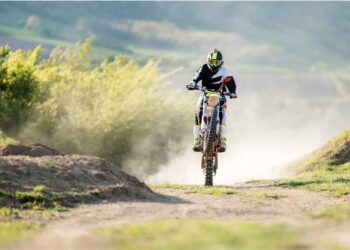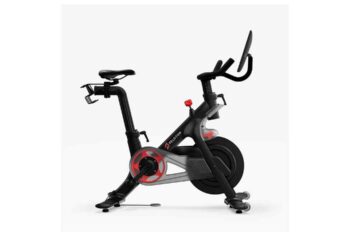As a cycling enthusiast, I’ve always been curious about the average speed for biking and how to enhance my own pace. Whether you’re a beginner or an experienced cyclist, understanding your cycling speed and finding ways to improve it can make your rides more enjoyable and satisfying.
So, what is the average cycling speed? It varies depending on factors such as fitness level, bike setup, terrain, and weather conditions. In this section, we’ll explore the typical cycling speed average and provide practical tips on how to boost your speed and efficiency.
Key Takeaways:
- The average cycling speed is influenced by various factors such as fitness level, bike setup, terrain, and weather conditions.
- Improving your cycling speed takes time, patience, and a commitment to continuous improvement.
- Effective techniques to boost your cycling speed include optimizing your bike’s gearing, improving your pedaling technique, incorporating interval training, and utilizing aerodynamic positioning.
- Structured training programs and strategies can be highly effective for enhancing your cycling speed and achieving your goals.
- By implementing the tips and strategies discussed in this guide, you can enhance your average cycling speed and enjoy faster, more efficient rides.
Understanding the Cycling Speed Average
Before we dive into how to improve your cycling speed, let’s first gain a clear understanding of what the average cycling speed is.
According to a study conducted by the International Journal of Sports Medicine, the average cycling speed for recreational cyclists is 14-16 mph (22.5-25.7 km/h) while the average speed for professional cyclists is 24-28 mph (38.6-45.1 km/h).
It’s important to note that this speed can vary depending on a variety of factors, including:
- Your own fitness level
- The type of bike you’re using
- The terrain you’re riding on
- The weather conditions
In general, road bikes tend to be faster than mountain bikes due to their lighter weight and more aerodynamic design. Flat, smooth roads generally allow for higher speeds than hilly, challenging terrain. Windy or rainy conditions can also slow you down.
To get a better understanding of how these factors impact your cycling speed, let’s take a look at the following table:
| Factor | Average Speed Increase/Decrease |
|---|---|
| Improving fitness level | Increase |
| Switching to a road bike | Increase |
| Riding on flat roads | Increase |
| Riding on hilly terrain | Decrease |
| Riding in windy or rainy conditions | Decrease |
It’s important to keep in mind that while the average cycling speed can give you a baseline to work from, your own speed may vary significantly depending on these factors.
Factors Affecting Cycling Speed
As a cyclist, it’s important to understand that your average speed can be influenced by various factors. Knowing these factors can help you identify areas where you can improve and gain more speed. Here are some of the key elements that can affect your cycling speed:
- Fitness level: Your overall physical fitness level plays a significant role in your cycling speed. Cyclists who are in good shape can ride faster and longer than those who are not.
- Bike setup: Your bike’s setup, including the type of bike, the quality of the components, and the correct fit, can all impact your cycling speed. Make sure your bike is in good working order and set up correctly for your body type.
- Terrain: The type of terrain you’re cycling on can have a huge impact on your speed. Hills, wind, and other factors can slow you down, while flat roads and tailwinds can help you ride faster.
- Weather conditions: Weather conditions can also affect your cycling speed. Riding in the rain, for example, can make the roads slippery and more dangerous, while riding in extreme heat or cold can be physically challenging.
- Road surfaces: The type of road surface you’re cycling on can impact your speed as well. Smooth, well-paved roads are ideal for cycling at high speeds, while rough or uneven roads can slow you down.
By taking these factors into account, you can better understand your average cycling speed and work to improve it. It’s also worth noting that the average speed for cycling can vary widely depending on these factors and others.

By incorporating these tips into your cycling routine, you can significantly increase your biking speed average and enjoy faster, more efficient rides. Remember to maintain a consistent training schedule, track your progress, and celebrate each improvement along the way.
Conclusion
Improving my cycling speed has been an exciting journey for me. It takes time and dedication, but the payoff is worth it. By following the tips and strategies discussed in this guide, I have been able to enhance my average cycling speed and enjoy faster, more efficient rides.
Remember that everyone’s journey is unique, and progress can vary depending on factors such as fitness level and dedication to training. However, by setting realistic goals and tracking my progress, I have been able to stay motivated and continually improve my average bike riding speed.
Always be patient with yourself and celebrate each improvement along the way, no matter how small. With consistency and a commitment to continuous improvement, you can also increase your bicycle mph and enjoy the thrill of faster and more efficient rides. Happy cycling!
FAQ
What is the typical cycling speed average?
The average cycling speed can vary depending on several factors, but generally, a casual or recreational cyclist typically rides at around 10-14 miles per hour (mph), while a more experienced or competitive cyclist can maintain an average speed of 15-20 mph. It’s important to note that these numbers are just averages and individual speeds can vary.
How can I improve my cycling speed?
There are several ways to improve your cycling speed. First, focus on building your fitness level through regular training and conditioning exercises. Next, ensure your bike is properly adjusted and maintained for optimal performance. You can also work on your pedaling technique, use proper gearing, and incorporate interval training sessions to build speed and endurance. Practice riding in different terrains and conditions to improve overall bike handling skills.
What factors affect cycling speed?
Cycling speed can be influenced by various factors, including your fitness level, bike setup, weather conditions, road surfaces, and terrain. These factors can impact your ability to maintain a consistent speed and overall performance. By understanding these factors, you can identify areas for improvement and make adjustments accordingly.
Are there any specific tips to boost my cycling speed?
Absolutely! Here are some tips to help you increase your cycling speed:
1. Optimize your bike’s gearing to find a comfortable cadence.
2. Work on improving your pedaling technique, focusing on a smooth and efficient motion.
3. Incorporate interval training into your routine, alternating between high-intensity bursts and recovery periods.
4. Practice riding in an aerodynamic position to reduce wind resistance.
5. Consider participating in group rides or joining a cycling club to learn from experienced riders and gain motivation.
Are there any recommended training programs for improving cycling speed?
Yes, structured training programs and strategies can help you enhance your cycling speed. Some popular training methods include base training, interval training, hill repeats, and group rides. These programs are designed to build endurance, strength, and speed. Setting realistic goals and tracking your progress can also help you stay motivated and measure your improvements over time.
What is the key takeaway for improving cycling speed?
Improving your cycling speed requires dedication, consistent training, and a commitment to continuous improvement. By understanding the average speed for cycling, the factors that affect it, and implementing the tips and strategies discussed in this guide, you can work towards enhancing your average cycling speed and enjoying faster, more efficient rides. Remember, progress takes time, so be patient and celebrate every milestone along the way. Happy cycling!


















